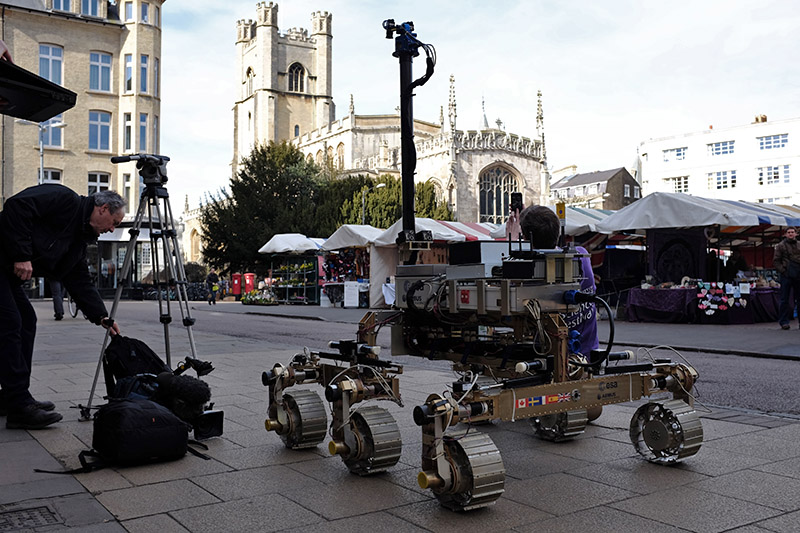It’s a question we’ve been asking ourselves for decades, but soon scientists hope to discover more about the Red Planet’s capacity to sustain life.
In 2018 the ExoMars programme will send a UK-built ‘Mars rover’ on a nine-month journey to the Red Planet to search for signs of life beneath the planet’s surface. Created in Stevenage, the intelligent rover features six wheels made from springs designed to negotiate Mars’ rocky surface, together with cameras and a drill.
The Mars rover prototype, nicknamed Bruno, was unveiled to the Cambridge public today (6 March) as part of Cambridge Science Festival. Crowds gathered to watch as it manoeuvred its way slowly across the cobbles with delicate precision.
Said Alastair Wayman, future programmes developer at AirBus:
“This prototype is used for testing the guidance navigation control software. It’s an autonomous rover, which means we can tell it to drive to a certain point and it will plot itself a route avoiding any big rocks.
“The primary goal of it is to look for life on Mars. Previous rovers have looked for water and signs of life, but this is the one that will look for life on the surface, and beneath the surface of Mars. That’s where they think that it’s most likely to be. “Mars doesn’t have a magnetic field so it doesn’t get shielded from the sun’s radiation, which means that anything on the surface of the planet gets killed by that radiation. But a meter or two beneath the surface, the surface itself has protected you from that radiation. The rover has a drill attached and will take a sample from about two meters down.”
Does he think they’ll find anything?
“It’s an interesting questions, and I don’t know. Hopefully this will answer some of those questions.”
See the Mars rover in action on 14 and 15 March at The Guildhall, Market Square, 10am-4pm (from 11am Sunday) in Journey to Mars and Beyond.

